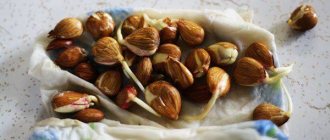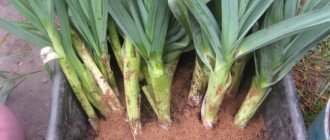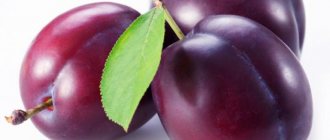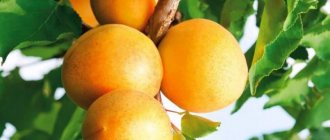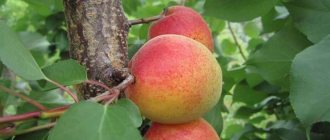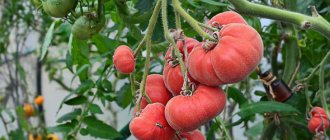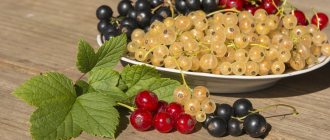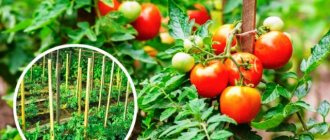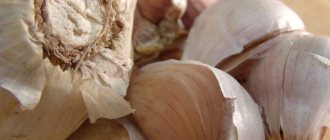Why graft apricot: purpose and advantages of the procedure
Apricot is a heat-loving plant, so most varieties are not adapted to survive in the north of the country. Grafting onto a winter-hardy rootstock makes it possible to increase the variety's resistance to temperature changes.
Apricot grafting improves the quality of the fruit and the tree itself
Grafting may have other goals: cultivating a wild apricot tree, increasing productivity, propagating a favorite variety, strengthening immunity, etc.
Note! Grafting an apricot accelerates its fruitfulness. The first harvest can be harvested within three years after the procedure.
Grafting as the best way to obtain the desired variety
Grafting is an excellent agrotechnical technique that can significantly improve the varietal characteristics of a plant by combining one part of it with a part from another plant. The part that will be grafted is called the scion, and the part that will be grafted onto is called the rootstock. The action itself involves the engraftment of scion tissues to the tissues of the rootstock, where, as a result, one single plant is created from two different trees. Due to the feeding trunk, the varietal scion receives all the nutrients necessary for life and begins to show its best characteristics, which is facilitated by high-quality grafting.
In addition, thanks to this agrotechnical procedure, the level of winter hardiness of the fruit crop increases, which is of significant importance for regions with cold climates. For these purposes, a grafted plant with a weak degree of resistance to low temperatures is combined with a more frost-resistant variety. The success of the procedure depends on careful execution and compliance with all rules.
It is noteworthy that having mastered the grafting technique, you can create real masterpieces with high taste qualities. And it is not necessary to use the same varieties or types of trees.
For example, for a pear you can choose a quince as a rootstock or for a cherry - a cherry, and the scion retains its qualities.
If you graft an apricot onto a plum, you end up with an apricot and not a plum. But the grafted cutting acquires the best qualities of the rootstock, in particular frost resistance.
To what type of tree and in what time frame can apricot be grafted?
Beginning summer residents often ask the question: “What can you graft an apricot on?” You can engraft an apricot cutting:
- For cherry plum.
This is one of the most resilient trees in relation to environmental changes. The survival rate of scions is high. - To the plum.
Gardeners often choose plum as a mother plant; compatibility with apricot is excellent. Grafting an apricot onto a plum is considered a good option, but it is better to select a wild plum variety with a sufficient degree of resistance to negative temperatures. In this tandem, the apricot rootstock conveys its best characteristics - endurance. At the same time, the taste of the scion does not change. - On the turn.
Here, in most cases, grafting is carried out by experienced gardeners, since the process occurs as close to the root as possible. This approach is explained by the presence of shoots near the thorn. - For apricot.
When grafting apricot onto apricot, you can use completely different varieties; there are no restrictions on compatibility. - To the cherry.
The survival rate of the scion on cherries is low; there is a need to select a variety. Grafting an apricot onto a cherry is done as follows: first graft a plum onto a cherry, and then graft an apricot onto the plum. - On a peach.
It is possible to carry out agrotechnical techniques with this combination, but it is necessary to take into account the characteristics of the rootstock; it is too tender and strongly depends on the climatic factor. - To the apple tree.
It is not recommended to graft an apple tree; pome crops are more suitable, but not stone fruits.
The optimal time for grafting an apricot is when the tree is dormant - early spring or late autumn. But if you approach the process properly and use high-quality grafting material, then the event can be carried out in the summer.
The probability of good survival of cuttings with autumn or spring grafting is an order of magnitude higher than with summer grafting.
Apricot grafting in the spring should be done before the buds swell - the last days of March and all of April.
For autumn work, it is better to choose the first half of September and continue until mid-October.
If apricot grafting takes place in the summer, it is recommended to carry out the work in August in warm and dry weather. Considering the weakening of the apricot tree during this period, it is necessary to properly treat the cut site and take care of the appropriate care of the plantings. Namely, the number of waterings needs to be increased and mineral fertilizers added. The percentage of vaccine rejection in the summer is minimal.
Winter grafting is carried out indoors, and in the spring the trees are planted. If the temperature is +2 degrees outside, then it is quite possible to carry out all the actions in the garden on the plantings.
To increase the effectiveness of the procedure, the gardener is required to comply with the following rules to preserve the plant during the adaptation period. How to vaccinate correctly:
- Time for harvesting cuttings and conditions for their storage. The material must be harvested after the leaves have fallen; the upper shoots are cut off and wrapped in film. They are stored directly in a snowdrift; when it melts, the cuttings must be transferred to the bottom shelf of the refrigerator, first wrapped in a damp cloth. Before starting this activity, the cuttings are soaked in water. The tools used must be sterilized, well sharpened and in working condition, because you will have to work with the internal tissues of plants.
- It is recommended to tie the engraftment site tightly enough. This will help ensure maximum fixation of the cutting. Only close contact can ensure high survival rate of the scion with the rootstock.
When two identical varieties are combined, the result is a plant with sufficient resistance to drought, low temperatures, without shoots and with large fruits.
It is interesting that the procedure takes about 10 minutes, and the adaptation period can last differently, as the result of a successful experiment will be the appearance of leaves on the cutting. Fruit harvesting during grafting occurs in the second or third year, and when planting a young seedling - in the third or fourth year. It happens that after one year the first ovaries form on the apricot; they must be removed for better stimulation of the branches during active growth.
Timing of apricot grafting in Russia and beyond
Apricot Black Prince - description and history of fruit selection
Spring is the most optimal period for grafting fruit trees.
- In the middle zone, it is best to start vaccination from the first days of April.
- In the southern regions of Russia (Krasnodar and Kuban Territories, Republic of Crimea) and Ukraine, favorable climatic conditions allow vaccination activities to be carried out from mid-March.
Note! The procedure can be performed in the spring, when the threat of frost has passed and the air temperature exceeds 0 °C.
Apricot grafting is carried out in summer and even in autumn. Thus, in the middle zone and in the south of the country, the cultivation of fruit trees in the summer is carried out by splitting or using propagation by eye - from the second ten days of July until the end of August.
In this case, in the case of a warm autumn, the terms can be extended until mid-September, but no more - the grafted cuttings must have time to take root before the onset of cold weather. At this time, they must be insulated by wrapping them in a special sleeve filled with sawdust and wrapped in polyethylene.
In regions with a harsh continental climate (Ural, Siberia), apricot is grafted only in the spring - from the second ten days of April to the end of May. In the fall, it is not recommended to carry out work on propagating fruit trees here - the likelihood of a positive outcome is too low.
Preparation for the procedure
For beginning gardeners, it is recommended to prepare for grafting in advance - look for a suitable variety, stock up on cuttings. Prepare scion from healthy varietal apricots that have already had a good harvest. Store cuttings in a cool place.
Gardeners have different opinions about when it is best to stock up on cuttings. The scion is often cut out in the fall, but winter shoots also take root.
The main thing is to prepare cuttings on a warm day.
Optimal timing
Every experienced gardener has preferences regarding the timing of vaccination. Some plant cuttings in the spring, others like the autumn procedure. Each period is good, has advantages and disadvantages, so it is better to check for yourself when engraftment occurs best.
The summer procedure is also carried out frequently, although the requirements of agricultural technology must be observed here. July is considered the most preferable month for successful apricot grafting. August is also a good month for residents of warm regions - the plant will have time to take root.
What types of vaccinations are there?
Grafting trees in spring, methods of grafting fruit trees for beginners
Several methods are used to graft apricot trees, each of which has its own pros and cons.
Copying simple and improved
Apricot grafting using copulation method
The basic principle of this method is to use a scion and rootstock of the same diameter, the maximum size of which should not exceed one and a half centimeters.
Note! When copulating an apricot, it is recommended to take a rootstock no older than two years.
Oblique cuts are made on both shoots (equal in length and angle), after which they are connected to each other so that they are in close contact. Then a tape is wrapped around the grafting area and treated with garden varnish.
Sometimes gardeners, instead of an oblique cut, make a zigzag cut with tongues - this copulation is called improved, since the cuttings are connected to the rootstock much more firmly.
Kidney grafting (budding)
This method is the simplest and is suitable for beginner gardeners.
In this case, it is not a tree branch that is grafted, but only its bud. The bark on the rootstock area where the bud is planned to take root should be young and smooth. A T-shaped incision is made on it, into which a previously prepared scion is inserted. The procedure is completed by wrapping the graft with a fixing material (without covering the eye itself) and treating it with garden varnish.
Note! Apricot buds cannot be grafted if the air temperature is less than 0 °C. Usually the procedure is carried out no earlier than the third ten days of April - then the bud is already awakening, but has not yet blossomed
How to graft an apricot graft onto the bark
This method is suitable when the diameter of the cutting is much smaller than the diameter of the rootstock. The bark of the tree on which the new branch will be grafted is cut and turned to the sides. A scion branch is placed into the resulting gap, the base of which is first cut obliquely. Then the bark is bent back, the place where the plants are combined is tightly wrapped with film and smeared with varnish.
Side cut
It is used by gardeners when cultivating wild apricot species and to improve the fruitfulness of an adult plant. The trunk of the rootstock is cut from the side, and the cutting is placed in the cut.
The base of the cutting must be cut off in advance on both sides to form a wedge. After placing the scion in the pocket of the rootstock, the grafting site is tied with tape and lubricated with garden varnish.
Work on clothespinning in a side cut should be carried out from the third ten days of April.
Into the cleft
The thickness of the scion cutting in this case is taken less than the thickness of the rootstock. The latter is cut down to the required length, after which a split up to ten centimeters deep is made in the center using an ax or knife. The base of the branch is cut with a wedge, then placed in the split of the tree. The split area is wrapped in film and treated with varnish.
Note! The time for vaccination is in the spring: the last days of March - the beginning of April.
Split method
The Bridge method will help save damaged trees
The trunk of an apricot can be damaged under the influence of various factors. This is possible due to severe frosts or, conversely, under the influence of excessively high temperatures. Mechanical impact from wild animals or improper care also leads to wood damage.
To save trees with large-scale bark damage, the “bridge” method is needed. The damaged area is leveled with a knife or pruning shears. T-shaped incisions up to three centimeters long are made above and below the bare area at a short distance from each other.
Wedge-shaped apricot cuttings are placed into these slits, thereby connecting the lower and upper parts of the tree. The grafting process is completed by wrapping the bridge with tape and applying varnish.
Bridge method
Advantages of summer vaccination
Apricot is a heat-loving crop that is not always able to withstand frost. If it is not possible to purchase a zoned variety, it is worth trying vegetative propagation by cuttings.
Apricot is grafted in summer or spring. Spring vaccination has a lower percentage of successful outcome of the procedure. The advantages of summer vaccination are:
- no need to store the scion all winter;
- higher survival rate;
- if the attempt is unsuccessful, you can cut off another cutting;
- the plant has time to recover before the onset of cold weather.
Comparative table for choosing apricot rootstock depending on the region
The final result is primarily influenced by the quality of the selected scion and rootstock - it is always very important what the apricot is grafted onto. The rootstock for apricot must be selected depending on the area where the plant grows.
| Geographical location | Suitable rootstock |
| Southern part of Russia | Zherdel; Peach. |
| Middle lane | Cherry plum; Cherry; Manchurian and common apricot seedlings; Plum; Turn. |
| Regions with harsh continental climates | Manchurian apricot. |
Grafting trees in spring, methods of grafting fruit trees for beginners
However, this does not mean that other trees are not suitable for rootstocks - another stone fruit tree can also be used for grafting.
Important ! Not all fruit plants are suitable for grafting an apricot tree. Combining it with rowan, apple, pear, and shadberry will not bring the desired result.
Are cherry plums and cherries suitable as rootstocks?
Tinting cherry plum and apricot is a very common phenomenon in gardening; it leads to increased immunity of the tree and improved taste of the crop: the fruit becomes sweeter with a pleasant aftertaste.
Cherry rootstock is not the best solution: the fragility of its wood can lead to broken branches during the fruiting period.
Apricot grafting onto sloe
Farmers quite often use thorn rootstock for apricots because of its amazing ability to adapt to temperature changes and take root in infertile soil. The main and only one disadvantage of the blackthorn is the rapid and massive growth of basal shoots, which affects the growth rate of fresh shoots of the plant and subsequently complicates access to its fruits.
Apricot grafting onto cherries and cherries
The survival rate of apricot branches on cherries and cherries is very low, despite the fact that these plants are genetically close. Moreover, the branches of small-fruited plants, due to their structure, cannot withstand an apricot harvest. Thus, combining these plants will lead to the desired result, but problems may arise in the future.
Grafting an apricot onto a peach
Peach rootstock is used quite rarely, since the tree itself is heat-loving and grows only in the southern part of the country. The combination of apricot and peach is ideal - the cutting will most likely take root on the rootstock, but when frost occurs, the peach rootstock will freeze.
How to properly graft an apricot?
Apricot can be grafted using any of the above methods. To carry out a successful grafting, it is important to choose a rootstock tree that is not too old. As practice shows, grafting on trees older than 4–5 years takes less root than on two-year-old seedlings.
On rootstocks of this age, not only do scions take root poorly and rarely, but as a result of the transplantation, the trees begin to get sick. Moniliosis and other fungal diseases often develop on them, as a result of which the bark becomes covered with mold and the tree gradually dies.
Did you know? Russian, and later Soviet scientist, Ivan Vladimirovich Michurin was the founder of the technique of grafting fruit trees. The gardener grew dozens of different varieties on one tree, and they all bore fruit.
How to properly graft an apricot:
- The tree on which the grafting is planned is selected. It is advisable that it be a young wild apricot seedling, or, in common parlance, a pole.
- The central branches of the wildflower are cut off. The place where they were cut should be close to the trunk.
- Apricot is chosen as a rootstock, on which large, sweet fruits grow. From the mother plant I cut thin branches (cuttings) 10–15 cm long.
- Cuttings are grafted onto wild apricot, for example, using the “under the bark” method. To do this, the bark at the grafting site is slightly separated from the tree, and the cutting is firmly inserted there. Since the grafting does not always take root, experienced gardeners recommend making them in the amount of 3–5 pieces. If excess cuttings take root, they can always be trimmed. When all the cuttings are inserted under the bark along the cut diameter of the apricot branch, they are tightly tied at the junction, in a circle, on top of the bark of the rootstock.
- The open part of the tree stump with the attached cuttings is filled with oil paint intended for streets, or with garden varnish. The application of the protective layer should be generous, so that not a single untreated joint is left. Both oil paint and garden varnish serve as an insulating material that prevents pathogens from penetrating the wood.
Video: Apricot grafting
The gardener can tell whether the grafting was successful by whether the cuttings of another tree grafted onto the rootstock are developing. If leaves appear on it and its length gradually increases, that is, the cutting develops, which means the scion has taken root.
Harvesting, storage conditions and scion preparation
Cuttings are cut from branches with a diameter of 5 mm. It is necessary that there are 5-10 buds on a scion 10-15 cm long. To preserve them, it is necessary to ensure conditions under which the kidneys do not begin to awaken. To do this, use a refrigerator or a room with a temperature of +2 °C.
Autumn is the best time to take cuttings
It is also important to monitor the humidity level; at elevated levels, the bark begins to rot, which leads to damage to the buds.
Before starting vaccination, the kidney should be examined for suitability. To do this, cut the bottom one with a blade and if it has a green tint, it means the cutting has not deteriorated during storage.
Additional Information ! Before grafting, you can also inspect the cutting for suitability by bending it. It should take on the shape of the letter P without crunching and return to its previous shape.
Rules for selecting and storing scion for apricot grafting
The qualities of a good apricot scion (cutting) include:
- transplant material thickness – 5-7 mm;
- scion length – 20-30 cm;
- the number of buds is no more than 2-3 pieces.
Cuttings must have vegetative buds.
The branches should not be damaged, frozen, or infected with diseases or pests. The cuttings should be green when cut.
You can check the viability in the traditional way - bend it. If the cutting bends easily, then it has a good chance of taking root.
Rules for harvesting and storing apricot scion:
- Cuttings need to be harvested in the fall, after the sap flow has stopped, but before the onset of frost.
- Wrap the cut cuttings in a damp cloth or place them in a box with damp sawdust or moss, then wrap them in a perforated bag so that they can breathe.
- Store them in a cool place: at a temperature from 0 to +5 degrees.
Be sure to open the package with cuttings once or twice a month and inspect them for mold or fungal damage.
Preparation of tools and material
A budding knife is a tool that is difficult to do without. It must have a very sharp blade for perfect, even cuts.
A branded product is highly expensive; for non-professional work, you can get by with a simple pocket knife with a short blade.
The main tool for grafting is a budding knife
In the autumn, a garden pruner, also with well-sharpened blades, will come in handy for preparing cuttings, otherwise the branches will simply be pressed down.
To perform the winding, you can purchase a special tape or cut polyethylene strips of suitable length and width. Some gardeners replace them with electrical tape or tape. Adhesive materials can only be used with the sticky layer on the outside, otherwise there is a risk of bacteria getting into the cut area.
What is vaccination
Grafting is one of the methods of apricot propagation.
The essence of the procedure is to combine two parts of different organisms and force them to grow together into one. Apricot is grafted at certain times of the year. It is quite possible to graft an apricot onto a plum, but you can use an apricot graft onto an apricot.
It rarely happens that trees of the same variety or species do not converge. Grafting an apricot onto a plum also has a high percentage of compatibility. Of 100% of crossbreeding attempts, 95% are successful. You can also combine apricot with peach, but this option has only 50% success. An apricot can be grafted onto a plum, but the likelihood of success is even less.
Summer budding works best (from May to June), since the chance of freezing is minimal, and the rejection rate is significantly reduced. Over the summer, the seedlings will not only have time to take root, but also develop, and their root system will be ready for wintering. In addition, in summer it is much easier to care for the scion and rootstock, regulate the process of watering and root growth.
How to properly graft an apricot onto an apricot
Is it possible to graft apricot onto apricot without experience and what is the success rate of the operation - these are questions that concern novice gardeners. It is known that this option is considered the most successful. This will significantly speed up the appearance of the first fruits, namely by 2-3 years. A simple seedling is ready for fruiting only after 4-5 years of growth.
You can graft an apricot onto an apricot even if the seedling was grown from a seed. In this case, a young plant can easily acquire the properties of different varieties, and will also have a positive effect on the taste of the fruit.
Compared to apple or pear trees, apricots are not usually planted at ground level. On young trees, grafting is carried out at a height of 30-40 cm from ground level. For large rootstocks this distance increases to 100 cm, but no more. The higher the procedure is carried out from the ground, the lower the risk of heating and freezing, which often replace each other in the middle zone.
Additional Information! Grafting done as close to the base of the branch as possible increases fruiting.
What fruit trees can be grafted with?
It is not necessary to graft apricots with relatives - excellent results are obtained using other crops. The main thing is to first find out with which plants the grafting will be most effective.
Apricots can be grafted onto the following crops:
- To the plum. Use only semi-wild varieties. A pinched tree will have endurance and durability.
- On a peach. It is recommended to carry out grafting only in warm regions - the peach is not frost-resistant, so it easily dies in severe frosts.
- For cherries. A risky process - the graft survival rate is low. Another disadvantage is that the place where the cutting took root often breaks even with weak gusts of wind.
- To the cherry. As with cherries, the survival rate is low, and the cut points often break.
- For cherry plum. By crossing two crops, it will be possible to grow an excellent tree - undemanding to the composition of the soil, resistant to frost and drought.
See also
Description of the apricot variety Kyiv Early, characteristics of frost resistance and yieldRead
It is better for beginners to try their hand at grafting suitable crops that have characteristics similar to apricot. Only after the first successful experiment should we proceed to more capricious plants.
Harvesting cuttings
The recommended length of the cuttings is no more than 15-17 cm. Be sure to make sure that they have 4-6 healthy buds. In autumn, harvesting is carried out after the leaves have dropped - in November. After tying, send them into bundles for storage; a cool room is suitable for this. If there are a lot of cuttings, use furrows dug in the soil for storage - lay plant materials tightly, sprinkle with sawdust, straw, and dig in with soil.
Before frost, cover with spruce branches and cover with fallen snow.
If harvesting occurs in spring or summer, it is recommended to use fresh cuttings that have grown after winter. Capture a little of last year's growth, and be sure to remove the top bud. It is better to vaccinate with green shoots - the survival rate increases significantly.
Apricot care after grafting
After the procedure is successful, the following care must be provided:
- protect the vaccination site from direct sunlight;
- remove the winding after the buds appear;
- remove fresh shoots formed below the graft;
- carry out the formation of cuttings after 2 years of growth.
3-5 weeks after grafting, with the appearance of green leaves, the final result will be visible (the summer method is an exception).
If difficulties arise during grafting, you should not give up; you can practice on a weakly growing tree. The simplest and most successful method is grafting into the cleft.
Vaccination dates
Each gardener has his own opinion as to when it is best to graft apricot onto apricot. The timing of completion depends on the method:
- The most popular is grafting using cuttings. For apricots in most areas of the middle zone, this procedure can be carried out in early April, and in the south - in mid-March. The vaccination work should be completed by the beginning of May. Of course, these dates may shift depending on the actual weather: after vaccinations, severe frosts are absolutely unacceptable.
- If the early spring vaccination did not work out for some reason, in many regions you can try it a little later - from late May to mid-June. True, the survival rate of the scion in this case will be much lower.
- Grafting using the budding method (by eye) is usually carried out in August, when the buds on this year's growths have already matured and the growth of shoots has practically stopped.
Is it possible to graft an apricot in the spring?
Grafting apricot onto apricot using cuttings works best in the spring. Intensive sap flow at this time allows the scion to reliably and quickly grow to the rootstock. During the growing season, the cutting not only manages to take root with the rootstock, but also produces significant growth. By winter, the new branch should become woody and harden well.
A grafted apricot cutting manages to produce good growth over the summer
Why is vaccination needed?
Grafting a tree, that is, shading, is the transfer of a small piece of one tree to another, on which the sections grow together. The end result is a completely new plant, the root system of which remains from one “parent” and ensures the development of the above-ground part of the second. In addition, for the second part, a special variety with good characteristics is selected.
With the help of this operation, a large number of problems in the personal plot are solved. The most important thing is that, thanks to such processes, the plant begins to bear fruit much earlier than when grown by seed. For this, two, maximum three years are enough. At that time, when propagating from seeds, you need to wait at least ten, or even fifteen years before the first harvest.
Apricot tree
With the help of grafting, the gardener receives exactly the apricot variety that he likes most. In this case, you do not need to buy a varietal seedling, because when you buy it you can buy a pig in a poke. Here, I took a cutting, and in a few years you can enjoy the delicious fruits in the garden.
By performing this operation, you can grow several varieties on one trunk, thereby saving space in the garden for a larger variety of fruit trees.
There are different methods for this procedure:
- using a cutting;
- kidney.
Grafting with a kidney is called budding, that is, translated from Latin oculus - eye. There are several ways of budding:
- Butt budding;
- Budding with a shield with wood;
- Budding with a shield without wood;
- Budding in a T-shaped incision.
Important! Budding is the most common method. For this process, you only need one bud-eye, which is grafted either onto a game tree or onto a varietal tree.
Budding is carried out in spring or summer. In the spring, a peephole from a cutting harvested in the fall is used for the operation. It will take root and begin to actively germinate this year with the start of sap flow. The operation is called “budding with a sprouting eye.” The summer procedure is carried out using a bud that was removed from the branch immediately before the process. The bud will begin to germinate only next spring. This budding is called "sleeping eye budding."
Vaccination methods
Pros of budding:
- the scion receives minimal trauma;
- if the operation is unsuccessful, it can be repeated;
- little material is used;
- no need to spend a lot of time during the operation.
Differences between spring vaccination and autumn and summer
Spring apricot grafting will be no different from autumn and summer grafting, if everything is done correctly, and therefore does not harm the tree. The very first thing that needs to be taken into account is the growth characteristics of the tree during this particular period of the year.
Tip #2. It is recommended to prepare cuttings for grafting in advance. Carry out grafting on a not hot, cloudy day. You shouldn't choose a time that is too rainy either.
The best time for vaccination is undoubtedly spring. The period of increased circulation of tree sap and residence of the scion on the rootstock is also increased. In spring, the most optimal time is the end of April and the beginning of May with slight drops in daytime temperatures.
Cuttings grafted in summer also do not feel bad, but the sap flow is no longer as intense as in the spring. In general, the scion manages to take root quite well during the warm period of the year and, having survived the winter, it will already produce the first shoots and the first set of fruits. It is recommended to remove these first shoots, as after this the tree develops better.
Autumn vaccination is generally a good option and should be carried out around mid-October, when it is the so-called “Indian summer”. If possible, check the weather forecast in advance and protect the grafted plant from frost. Here you need to calculate so that the scion takes about 1-2 weeks of fine days.
Compatibility of rootstocks and scions
The most important thing to take into account in order to find out how compatible a cutting and a tree is is to consider their relationship in botany. There are 3 types of such relationships:
- grafting within a species – example, apricot tree and wild apricot;
- grafting between tree species - for example, plum-apricot;
- grafting between trees of different genera - pear-quince, peach-plum.
The graft takes root best on a tree where the grafting was carried out within the species. The worst option is between different genera of trees. The following recommendations have been empirically derived :
- For tree species that have fruits with seeds, the best rootstock can be cherry plum or wild plum.
- The best option is the apricot tree - the apricot tree. Cuttings of cherry plum, sloe and sand cherry also take root well.
- Apricot itself is a rather poor rootstock for all stone fruits.
Varieties and technologies
A prerequisite for a successful procedure, regardless of the chosen method of implementation, is to make the cut quite high from the ground surface. The distance from the soil to the cutting line is up to 30 cm. For mature trees it can be increased to one meter.
Check the cuttings before sending them to the garden. It is recommended to make a fresh cut under the bud - experienced gardeners claim that this will increase survival rate.
Copulation
Use this method only for spring grafting. It is recommended to carry out the same diameter of scion and rootstock. The process is carried out in two ways - oblique cuts are fixed or a tongue is made on the rootstock, and a depression is made on the scion (this technique is more effective).
The cut is fixed with adhesive tape, garden varnish, or film. During the first year, carefully monitor the condition of the plant. A month after the procedure, loosen the bandage slightly, and after six months, remove the fixing layer.
Into the cleft
Used when there is a difference in the diameters of the scion and rootstock. Use the cleft technique only in spring or early summer.
Carrying out the procedure:
- Cut the tree to the required height and carefully clean the cut.
- Using a sharp knife, split the trunk in the middle to a depth of 3-5 cm.
- Turn the tip of the handle into a wedge (cut on both sides or in a circle).
- Insert one or two scions into the gap.
- Tighten the trunk with tape, secure it, and pour it tightly with garden varnish.
If you pin it successfully, the first leaves will begin to bloom in a month. Remove the bandage after six months.
Budding
Apricot grafting using the budding method is rarely carried out; the survival rate is too low. It is recommended to use green shoots, which are cut off before the procedure. There should be 2-3 buds on the cuttings. It is better to cut under the eye.
Make a cut on the main tree (up to 3 cm high). Bend back the bark and insert the cut stalk. Fix using garden varnish and tape.
For the bark
The procedure is carried out on mature trees. The process can be applied at any time of the year. After cutting the trunk, pointed cuttings are inserted behind the cut bark and secured with electrical tape. It is recommended to graft several shoots onto one trunk, at least one of them will definitely take root.
Into the side cut
The process is reminiscent of budding. The only difference is that the cut on the side is much larger; several cuttings can be placed in it. The chances of good survival are significantly increased, at least one of them will certainly produce leaves.
Bridge
This method is usually used on apricots damaged by rodents in winter. The process is simple - remove the affected parts of the bark, insert the prepared cuttings as if into a pocket (strengthen at the top and bottom), and secure. Be sure to leave the bandage on for several months; it is better to remove it in the fall.
When is the vaccine given?
Apricot Academician
All gardeners recognize only spring as the best time for grafting fruit trees, since it is at this time that frost ends and sap flow begins. It is no secret that trees such as plum, apple and pear can withstand winter operations well. But apricot is a very fragile crop that is afraid of frost, so spring grafting is considered the best for it.
Summer grafting of apricots with fresh cuttings is only possible if it is done in warm regions. It is the long warm weather that allows the cuttings to take root without problems. It is best if you choose the month of June for this.
The best time to graft fruit trees is spring
For a successful operation, you must adhere to all the rules, so that the plant will survive and quickly take root. First of all, you need to take care of the material. The cuttings are harvested in late autumn. Then they need to be wrapped in plastic wrap and stored directly in the snow. In spring, the workpieces should be wrapped in a damp cloth and placed in the refrigerator. Before the procedure itself, you need to soak them in water.
Vaccination time in spring
In the spring, apricot can be grafted both during the period of bud dormancy and with the beginning of sap flow, but the specific timing depends on which grafting method is chosen. If you take cuttings before the buds break, there is a risk that they will freeze. Therefore, in cold climates and the Moscow region, it is wiser to prepare cuttings in the fall and store them until the onset of spring. The apricot grafting itself in regions further south can already be carried out in the last week of March, in the middle zone - from April until the first weeks of May. The main guideline here is the weather conditions and the condition of the trees.
Follow-up care for grafted cuttings
In order for a grafted apricot twig to take root, it needs to be given strength. Care is performed according to the following rules:
- shoots that draw juices for their growth are removed from the roots of the tree;
- the rootstock is often watered, fertilized, and the soil is not allowed to dry out;
- The foliage that has blossomed on the cuttings is sprayed with preparations against pests and diseases.
Next spring, the grown cuttings begin to be formed using pruning.
Vaccination rules
Apricots should be grafted using fresh cuttings or with eyes, that is, an axillary bud. To carry out this operation, you will need:
- pruning shears or small saw;
- cutting knife (it must be clean and sharp);
- reinforcing material, use electrical tape;
- garden var.
To carry out vaccination you will need garden varnish.
The main thing is that the cuttings are properly prepared for grafting. Until the moment of merging, the sheet cover must not be torn off. It is best to choose the strongest shoot of the year; it should have exclusively leaf-type buds in the amount of 3-4 pieces.
Shoots are cut from the mother plant using pruning shears. It should grow into a full-fledged cutting. Afterwards, you need to remove all the leaves, but leave their petioles. A cut of the same cutting is wrapped in gauze, previously soaked in aloe juice.
One of the most effective and best methods of grafting is splitting.
This method is universal and gives a 100% guarantee that the vaccination will be successful. This method can be used if the total diameter of the rootstock is greater than the total diameter of the cutting.
Such a rootstock can serve as the main trunk of a young plant, just like the adult branch itself. Procedure:
- A horizontal cut is made on the rootstock. It should be as smooth as possible.
- Position the knife and hit its base so that the rootstock wood receives a split of 3–4 cm. Lubricate the splitting area with aloe.
- Using a clean and sterile knife blade, cut the apricot stalk into two wedges. You should make the cuts carefully and in one motion so that there are no double cuts in one place.
- Carefully place the cutting wedge into the slot and treat the cut with garden varnish.
- Wrap the entire system in a spiral arc with electrical tape so as not to harm the bark of the seedling.
